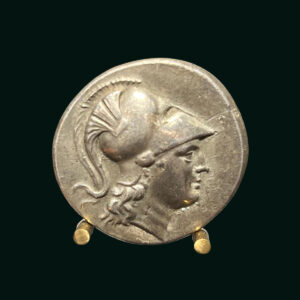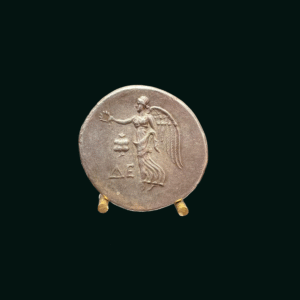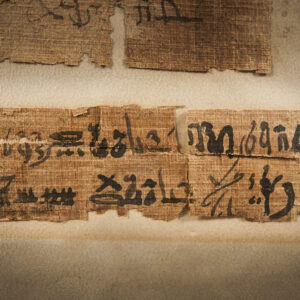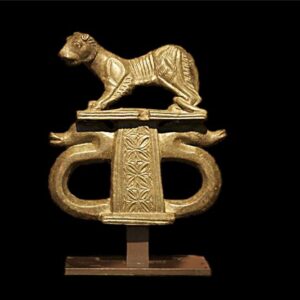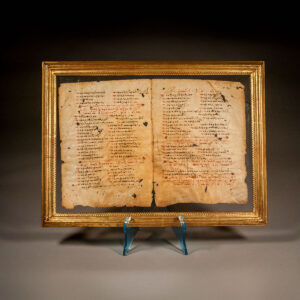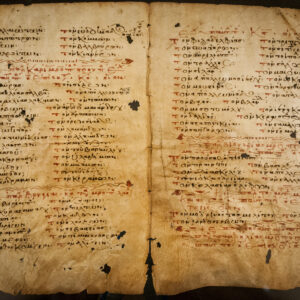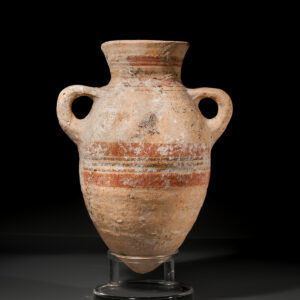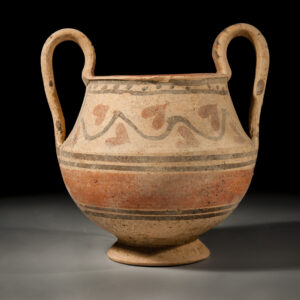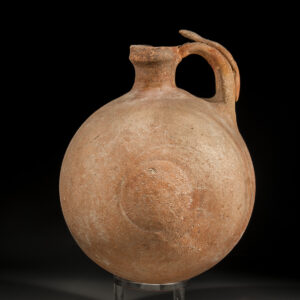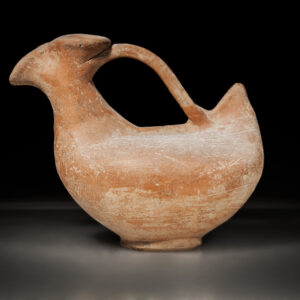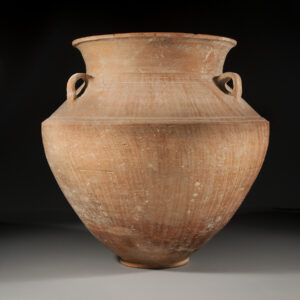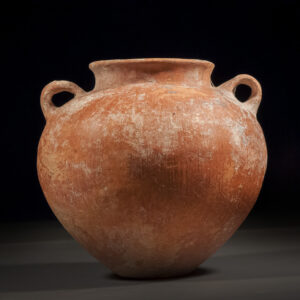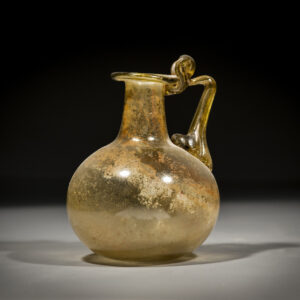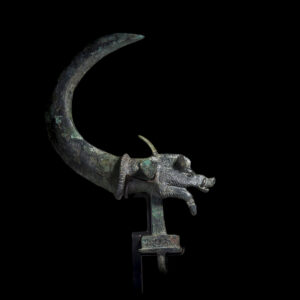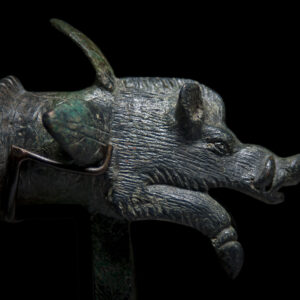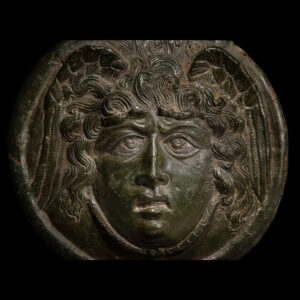Pamphylia Tetradrachm with Athena and Nike
Obverse (Front): The coin features a realistic portrait of Athena facing right. She is depicted wearing a Corinthian helmet, which is adorned with a decorative crest. The engraving captures fine details such as expressive eyes and intricate helmet ornaments, styled in the classical Greek artistic tradition.
Reverse (Back): The reverse displays Nike, the winged goddess of victory, in motion, flying left. She is shown with outstretched right arm holding a wreath, symbolizing victory, while her left arm is slightly bent. Nike’s flowing drapery and detailed wings convey a sense of movement and divine aura. Behind her, the inscription ΔΕΙ-ΝΟ (Deino) appears, indicating the magistrate responsible for minting the coin. To the right of Nike, in the field, is a pomegranate, a symbol associated with Side, representing fertility or prosperity. The background field is clear, ensuring that Nike, the wreath, the inscription, and the pomegranate stand out distinctly.
REFERENCE #
CO_GR_1005
CIVILIZATION
GREEK, Circa 205-190 B.C.
SIZE
D. 3 cm
CONDITION
Excellent Condition
PRICE
$1250

